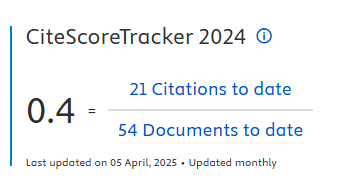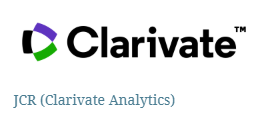Capabilities approach to social innovation: a systematic review
DOI:
https://doi.org/10.5585/iji.v9i2.19720Keywords:
Social innovation, Capabilities approach, Amartya Sen, Grassroots innovation, Public policies.Abstract
Objective of the study: This article aims to address paths and trends in the capabilities approach for developing the scientific field of social innovation (SI).
Methodology/approach: Systematic literature review guided by the PRISMA recommendation with analysis of 16 articles suitable for discussion, after filtering 114 studies returned by the Web of Science database.
Originality/Relevance: The study is justified in terms of the development of the SI field, which has resorted to the approach of Amartya Sen's capabilities, mainly for the advancement of SI in public policies.
Main results: Results led to a current understanding of the conceptual support from the perspective of capability development to help delimit the processes and results of social initiatives on three fronts: grassroots innovations, social innovation processes, citizenship actions, and public policies.
Theoretical/methodological contributions: It is pointed out that the congruence between SI and the capabilities approach works as an incremental theoretical contribution of the role of social actors in the bases of social and/or organizational structures through the development of their capabilities.
Social/Management Contributions: As an empirical contribution, the practices of inclusion, the interaction of social actors, and the strengthening of public policies are presented, which, ultimately, can consolidate alternative management and socioeconomic development practices.
Downloads
References
Abad, A. G., & Ezponda, A. G. (2019). Recursos y dilemas de la innovación social: Un concepto problemático. RES. Revista Española de Sociología, 28(3), 135–150. https://doi.org/10.22325/fes/res.2019.32
Adro, F., & Fernandes, C. I. (2020). Social innovation: A systematic literature review and future agenda research. International Review on Public and Nonprofit Marketing, 17(1), 23–40. https://doi.org/10.1007/s12208-019-00241-3
Avelino, F., Wittmayer, J. M., Pel, B., Weaver, P., Dumitru, A., Haxeltine, A., Kemp, R., Jørgensen, M. S., Bauler, T., & Ruijsink, S. (2019). Transformative social innovation and (dis) empowerment. Technological Forecasting and Social Change, 145, 195–206. https://doi.org/10.1016/j.techfore.2017.05.002
Bar-Ilan, J. (2008). Which h-index?—A comparison of WoS, Scopus and Google Scholar. Scientometrics, 74(2), 257–271. https://doi.org/10.1007/s11192-008-0216-y
Batista, L. F., & Correia, S. É. N. (2021). Capacidades coletivas em inovações sociais à luz do Ciclo 5C: Uma análise da Rede Paraibana de Bancos Comunitários . Contextus – Revista Contemporânea de Economia e Gestão, 19, 71-87. https://doi.org/10.19094/contextus.2021.61280
Biggeri, M., Testi, E., & Bellucci, M. (2017). Enabling Ecosystems for Social Enterprises and Social Innovation: A Capability Approach Perspective. Journal of Human Development and Capabilities, 18(2), 299–306. https://doi.org/10.1080/19452829.2017.1306690
Biggs, R., Westley, F. R., & Carpenter, S. R. (2010). Navigating the back loop: Fostering social innovation and transformation in ecosystem management. Ecology and society, 15(2).
Boni, A., Belda-Miquel, S., & Pellicer-Sifres, V. (2018). Transformative innovation. Proposals from grassroots innovations towards a human development. Recerca-Revista De Pensament & Analisi, 23, 67–94. https://doi.org/10.6035/Recerca.2018.23.4
Burchardt, T. (2004). Capabilities and disability: The capabilities framework and the social Model of disability. Disability & society, 19(7), 735–751. https://doi.org/10.1080/0968759042000284213
Cajaiba-Santana, G. (2014). Social innovation: Moving the field forward. A conceptual framework. Technological Forecasting and Social Change, 82, 42–51. https://doi.org/10.1016/j.techfore.2013.05.008
Chiappero-Martinetti, E., & Von Jacobi, N. (2015). How can Sen's' Capabilities Approach'Contribute to Understanding the Role for Social Innovations for the Marginalized?
Deneulin, S., & McGregor, J. A. (2010). The capability approach and the politics of a social conception of wellbeing. European Journal of Social Theory, 13(4), 501–519. https://doi.org/10.1177/1368431010382762
Dzikowski, P. (2018). A bibliometric analysis of born global firms. Journal of Business Research, 85, 281–294. https://doi.org/10.1016/j.jbusres.2017.12.054
Fiss, P. C. (2007). A set-theoretic approach to organizational configurations. Academy of management review, 32(4), 1180–1198. https://doi.org/10.5465/amr.2007.26586092
Foroudi, P., Akarsu, T. N., Marvi, R., & Balakrishnan, J. (2020). Intellectual evolution of social innovation: A bibliometric analysis and avenues for future research trends. Industrial Marketing Management. https://doi.org/10.1016/j.indmarman.2020.03.026
Geels, F. W. (2011). The multi-level perspective on sustainability transitions: Responses to seven criticisms. Environmental innovation and societal transitions, 1(1), 24–40. https://doi.org/10.1016/j.eist.2011.02.002
Gerometta, J., Haussermann, H., & Longo, G. (2005). Social innovation and civil society in urban governance: Strategies for an inclusive city. Urban studies, 42(11), 2007–2021. https://doi.org/10.1080/00420980500279851
Howaldt, J., & Schwarz, M. (2017). Social Innovation and Human DevelopmentHow the Capabilities Approach and Social Innovation Theory Mutually Support Each Other. Journal of Human Development and Capabilities, 18(2), 163–180. https://doi.org/10.1080/19452829.2016.1251401
Ibrahim, S. (2017). How to Build Collective Capabilities: The 3C-Model for Grassroots-Led Development. Journal of Human Development and Capabilities, 18(2), 197–222. https://doi.org/10.1080/19452829.2016.1270918
Jessop, B., Moulaert, F., Hulgård, L., & Hamdouch, A. (2013). Social innovation research: A new stage in innovation analysis. The international handbook on social innovation: Collective action, social learning and transdisciplinary research, 110–130.
Juuti, P. S., & Katko, T. S. (2005). Water, time and European cities-History matters for the futures.
Maclean, M., Harvey, C., & Gordon, J. (2013). Social innovation, social entrepreneurship and the practice of contemporary entrepreneurial philanthropy. International Small Business Journal, 31(7), 747–763. https://doi.org/10.1177/0266242612443376
Mahoney, J., & Thelen, K. (2009). Explaining institutional change: Ambiguity, agency, and power. Cambridge University Press.
Martin, C. J., Upham, P., & Budd, L. (2015). Commercial orientation in grassroots social innovation: Insights from the sharing economy. Ecological Economics, 118, 240–251. https://doi.org/10.1016/j.ecolecon.2015.08.001
Mazigo, A. F. (2017). Promoting Social Innovation Through Action Research: Evidence from an Empirical Study in the Fisheries Sector of Ukerewe District in Tanzania. Journal of Human Development and Capabilities, 18(2), 239–257. https://doi.org/10.1080/19452829.2016.1256276
Miller, D. (1990). Organizational configurations: Cohesion, change, and prediction. Human Relations, 43(8), 771–789. https://doi.org/10.1177/001872679004300805
Moher, D., Liberati, A., Tetzlaff, J., Altman, D. G., & Group, P. (2009). Preferred reporting items for systematic reviews and meta-analyses: The PRISMA statement. PLoS med, 6(7), e1000097. https://doi.org/10.1371/journal.pmed.1000097
Moher, D., Shamseer, L., Clarke, M., Ghersi, D., Liberati, A., Petticrew, M., Shekelle, P., & Stewart, L. A. (2015). Preferred reporting items for systematic review and meta-analysis protocols (PRISMA-P) 2015 statement. Systematic reviews, 4(1), 1. https://doi.org/10.1186/2046-4053-4-1
Molnar, G. (2017). Capability building combined with microcredit: The loan alone is insufficient. Journal of Social Entrepreneurship, 8(3), 354–374. https://doi.org/10.1080/19420676.2017.1371632
Moore, M.-L., & Westley, F. (2011). Surmountable chasms: Networks and social innovation for resilient systems. Ecology and society, 16(1).
Moulaert, F., Martinelli, F., González, S., & Swyngedouw, E. (2007). Introduction: Social innovation and governance in European cities: Urban development between path dependency and radical innovation. Sage Publications Sage UK: London, England. https://doi.org/10.1177/0969776407077737
Mumford, M. D. (2002). Social innovation: Ten cases from Benjamin Franklin. Creativity research journal, 14(2), 253–266. https://doi.org/10.1207/S15326934CRJ1402_11
Neumeier, S. (2012). Why do social innovations in rural development matter and should they be considered more seriously in rural development research?–Proposal for a stronger focus on social innovations in rural development research. Sociologia ruralis, 52(1), 48–69. https://doi.org/10.1111/j.1467-9523.2011.00553.x
Nicholls, A., & Murdock, A. (2012). The nature of social innovation. In Social innovation (p. 1–30). Springer. https://doi.org/10.1057/9780230367098_1
Orton, M. (2011). Flourishing lives: The capabilities approach as a framework for new thinking about employment, work and welfare in the 21st century. Work, employment and society, 25(2), 352–360. https://doi.org/10.1177/0950017011403848
Pel, B., Wittmayer, J., Dorland, J., & Jørgensen, M. S. (2020) Unpacking the social innovation ecosystem: an empirically grounded typology of empowering network constellations, Innovation: The European Journal of Social Science Research, 33:3, 311-336. https://doi.org/10.1080/13511610.2019.1705147
Pellicer-Sifres, V., Belda-Miquel, S., Lopez-Fogues, A., & Boni Aristizabal, A. (2017). Grassroots Social Innovation for Human Development: An Analysis of Alternative Food Networks in the City of Valencia (Spain). Journal of Human Development and Capabilities, 18(2), 258–274. https://doi.org/10.1080/19452829.2016.1270916
Phillips, W., Lee, H., Ghobadian, A., O'Regan, N., & James, P. (2015). Social innovation and social entrepreneurship: A systematic review. Group & Organization Management, 40(3), 428–461. https://doi.org/10.1177/1059601114560063
Portales, L. (2019). Social innovation and social entrepreneurship. Fundamentals, Concepts, and Tools. Cham, Switzerland: Palgrave Macmillan. https://doi.org/10.1007/978-3-030-13456-3
Roig-Tierno, N., Gonzalez-Cruz, T. F., & Llopis-Martinez, J. (2017). An overview of qualitative comparative analysis: A bibliometric analysis. Journal of Innovation & Knowledge, 2(1), 15–23. https://doi.org/10.1016/j.jik.2016.12.002
Rossetto, D. E., Bernardes, R. C., Borini, F. M., & Gattaz, C. C. (2018). Structure and evolution of innovation research in the last 60 years: Review and future trends in the field of business through the citations and co-citations analysis. Scientometrics, 115(3), 1329–1363. https://doi.org/10.1007/s11192-018-2709-7
Scheuerle, T., Schimp, G.-C., Glänzel, G., & Mildenberger, G. (2016). Report on Relevant Actors in Historic Examples and an Empirically Driven Typology on Types of Social Innovation.
Schubert, C. (2018). Social Innovation. In Innovation society today (p. 371–391). Springer. https://doi.org/10.1007/978-3-658-19269-3_17
Sedlak, D. (2014). Water 4.0: The past, present, and future of the world's most vital resource. Yale University Press.
Sen, A. (1990). Development as capability expansion. The community development reader, 41–58.
Sen, A. (2001). Development as freedom. Oxford Paperbacks.
Sferrazzo, R., & Ruffini, R. (2019). Are Liberated Companies a Concrete Application of Sen's Capability Approach?. Journal of Business Ethics, 1–14. https://doi.org/10.1007/s10551-019-04324-3
Souza, A. C. A. A., Lessa, B. de S., & Silva Filho, J. C. L. (2019). Social innovation and the promotion of local economic development. Innovation & Management Review. https://doi.org/10.1108/INMR-10-2018-0074
Taylor, R., Torugsa, N., & Arundel, A. (2020). Social Innovation in Disability Nonprofits: An Abductive Study of Capabilities for Social Change. Nonprofit and Voluntary Sector Quarterly, 49(2), 399–423. https://doi.org/10.1177/0899764019873965
Tiwari, M. (2017). Exploring the Role of the Capability Approach in Social Innovation. Journal of Human Development and Capabilities, 18(2), 181–196. https://doi.org/10.1080/19452829.2016.1271312
Tsakanika, L., & Chaves-Ávila, R. (2017). Building Social Innovation Ecosystems: A capability approach. Retrieved April, 29, 2019.
van der Have, R. P., & Rubalcaba, L. (2016). Social innovation research: An emerging area of innovation studies?. Research Policy, 45(9), 1923–1935. https://doi.org/10.1016/j.respol.2016.06.010
Van Raemdonck, L. (2019). Comparison of Four Different Livelihood Programmes for Urban Refugee Women in Durban, South Africa: Insights from the Capability Approach. Journal of International Migration and Integration, 20(2), 497–519. https://doi.org/10.1007/s12134-018-0618-5
van Wijk, J., Zietsma, C., Dorado, S., De Bakker, F. G., & Marti, I. (2019). Social innovation: Integrating micro, meso, and macro level insights from institutional theory. Business & Society, 58(5), 887–918. https://doi.org/10.1177/0007650318789104
von Jacobi, N., Edmiston, D., & Ziegler, R. (2017). Tackling Marginalization through Social Innovation? Examining the EU Social Innovation Policy Agenda from a Capabilities Perspective. Journal of Human Development and Capabilities, 18(2), 148–162. https://doi.org/10.1080/19452829.2016.1256277
von Jacobi, N., Nicholls, A., & Chiappero-Martinetti, E. (2017). Theorizing Social Innovation to Address Marginalization. Journal of Social Entrepreneurship, 8(3), 265–270. https://doi.org/10.1080/19420676.2017.1380340
Voorberg, W. H., Bekkers, V. J., & Tummers, L. G. (2015). A systematic review of co-creation and co-production: Embarking on the social innovation journey. Public Management Review, 17(9), 1333–1357. https://doi.org/10.1080/14719037.2014.930505
White, L. (2018). A Cook's tour: Towards a framework for measuring the social impact of social purpose organizations. European Journal of Operational Research, 268(3), 784–797. https://doi.org/10.1016/j.ejor.2017.06.015
Ziegler, R. (2010). Innovations in doing and being: Capability innovations at the intersection of Schumpeterian political economy and human development. Journal of Social Entrepreneurship, 1(2), 255–272. https://doi.org/10.1080/19420676.2010.511818
Ziegler, R. (2017a). Citizen Innovation as Niche Restoration—A Type of Social Innovation and Its Relevance for Political Participation and Sustainability. Journal of Social Entrepreneurship, 8(3), 338–353. https://doi.org/10.1080/19420676.2017.1364286
Ziegler, R. (2017b). Social innovation as a collaborative concept. Innovation: The European Journal of Social Science Research, 30(4), 388–405. https://doi.org/10.1080/13511610.2017.1348935
Ziegler, R., Karanja, B. H. K., & Dietsche, C. (2013). Toilet Monuments: An Investigation of Innovation for Human Development. Journal of Human Development and Capabilities, 14(3), 420–440. https://doi.org/10.1080/19452829.2012.693070
Ziegler, R., Molnar, G., Chiappero-Martinetti, E., & von Jacobi, N. (2017). Creating (Economic) Space for Social Innovation. Journal of Human Development and Capabilities, 18(2), 293–298. https://doi.org/10.1080/19452829.2017.1301897
Downloads
Published
How to Cite
Issue
Section
License
Copyright (c) 2021 Leonardo Ferreira Batista, Suzanne Érica Nóbrega Correia

This work is licensed under a Creative Commons Attribution-NonCommercial-ShareAlike 4.0 International License.
- Abstract 878
- PDF 632











